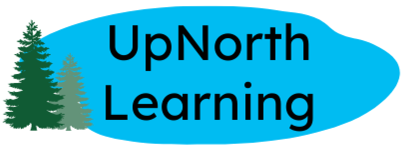Literacy has been on my mind again lately. It should be. I’m an English teacher, after all. What I have really been thinking about, though, is the rapid change in what it means to be literate for the future. Some people wonder whether books will die in an era of e-readers or whether cursive will become extinct. The real question, though,
is not what will die, but what will survive and what form will its evolution take in the next generation? And as someone who primarily teaches literacy, what can I do to ensure that students are prepared for the literacy challenges facing them?
There is no substitute for the fundamentals. Students need to read fluently and critically. They need to read rigorous materials that are challenging enough to encourage growth, yet accessible and intriguing enough to encourage perseverance. Students need to write clearly, concisely, and intentionally. They need writing tasks that are authentic, meaningful, and again challenging. They need mentors and mentor texts that allow them to envision who they might become as writers with their own voices and styles.
Beyond the fundamentals, though, a new definition of literacy has emerged that goes beyond reading and writing. If our students are to be literate in the world, they need a skill-set beyond the basics. Students need to be literate consumers and producers in a world driven by technology, marketing, and spin. We have all heard that we are preparing the students of today for jobs that have not yet been invented, and the same is true of technology. We are preparing students today to be literate with technology tools that have not yet been created. So instead of focusing our efforts on one tool, we need to teach students to succeed in a multi-faceted world. Just as we know that we can teach comprehension strategies that readers can adapt to any text, no matter the style or difficulty, and writing process strategies that can help them compose sophisticated works of all genres, maybe we can teach technology literacy strategies that students can transfer from one tool to the next more-challenging tool. Here are four strategies that I am incorporating with intention this year into technology and literacy instruction.
Connecting – Today, students have the opportunity to write for a real audience and to participate in discussions on a global scale. We cannot miss the opportunity in our classes to teach students about the power of their voices and the validity of their place in the conversation. Reading and writing suddenly become real when the audience is authentic. As a strategy for literacy, connecting with a genuine audience may be the most powerful. This year, my students are blogging and the local newspaper is working with us to feature their blog posts for a larger audience on the newspaper’s electronic website.
Collaborating – Students improve with modeling and mentoring, and digital collaboration opens up possibilities for collaboration beyond the classroom walls. Within our walls, 37 students collaborated to create chapters in one story that we are very proud of. It’s our Choose Your Own Adventure version of a Frankenstein sequel. You can see our work below and play along!
[googleapps domain=”docs” dir=”presentation/d/1Rq-xUcXTAaAGMNIgz1gjt-V4IccRQIcxc3oy8WnjL6w/embed” query=”start=false&loop=false&delayms=3000″ width=”960″ height=”400″ /]
Outside of the school walls, I am hoping to use Google hangout to get my students collaborating with people in the careers they wish to pursue.
Thinking Critically – I want students to be critical readers of text, and that includes reading information from the world around them. As we use the Internet throughout the year, we will talk about how to determine what is true in a world where every side uses tactics to twist the truth. If the Internet is the Great and Mighty Oz, then I want my students to see the little man behind the curtain. After high school, they will venture into a world with layers of meaning and hidden agendas. Preparing them to see those will give them the necessary discretion in the future.
Adaptability – Students will not use one tool in the future, so why should we limit our delivery to one tool? Students need, instead, to learn how to transfer their experiences with previous tools and to adapt to new tools. For example, this year, my students will use Microsoft Office, Google Drive, Dropbox, Evernote, TurnItIn, and KidBlog in the process of composing. And if we find another relevant tool during the year, we’ll use that too. With each new tool, we take a moment to look it over and think about what is similar to previous tools. Students will develop their favorites, I am sure, but I hope to discourage them from becoming entrenched in one tool. Their ability to adapt is going to be essential in their futures.
Though some tenets of literacy instruction won’t change as technology evolves, others will, and we have to start having conversations now about what we hope students are prepared for five years from now.
